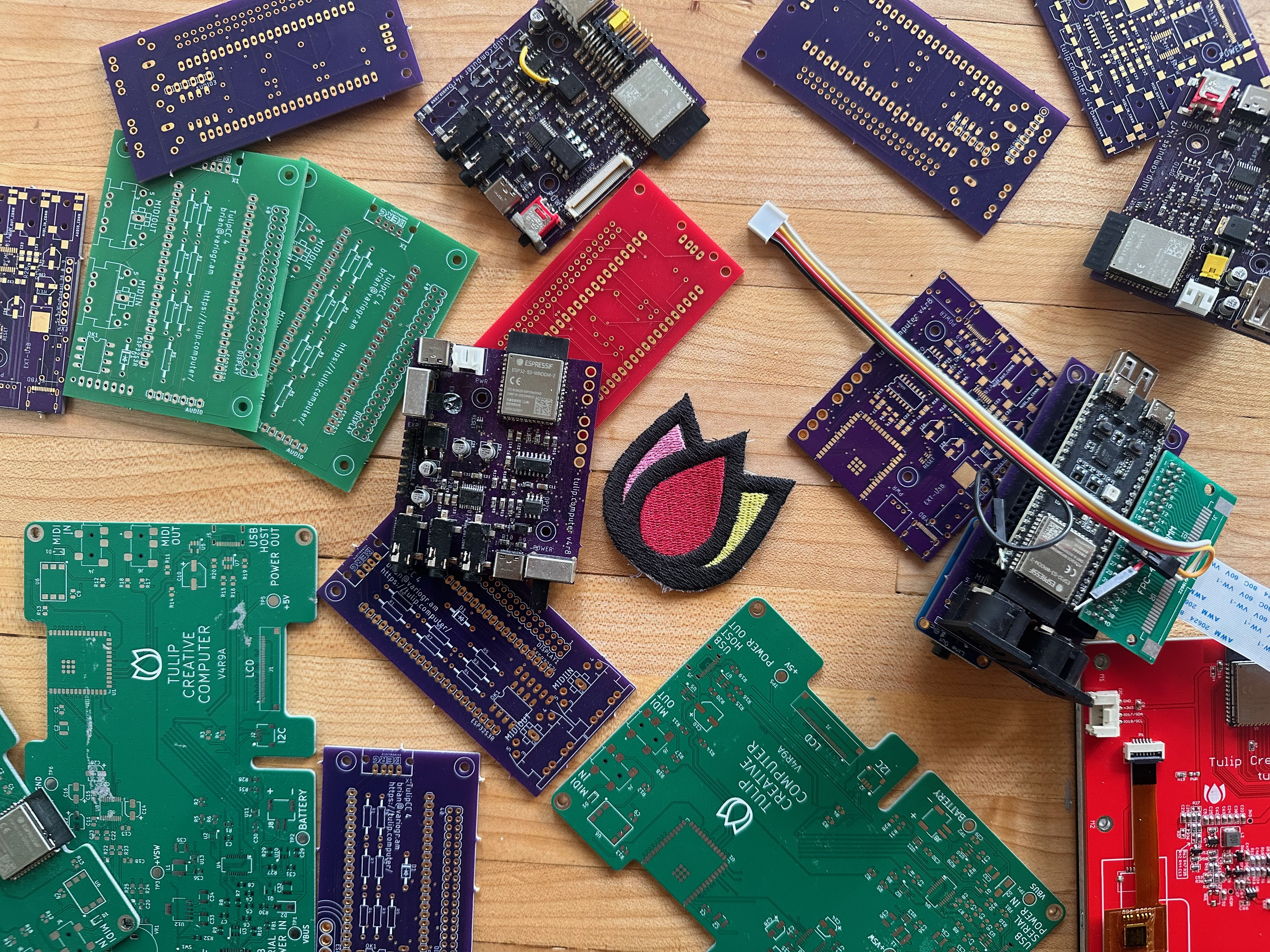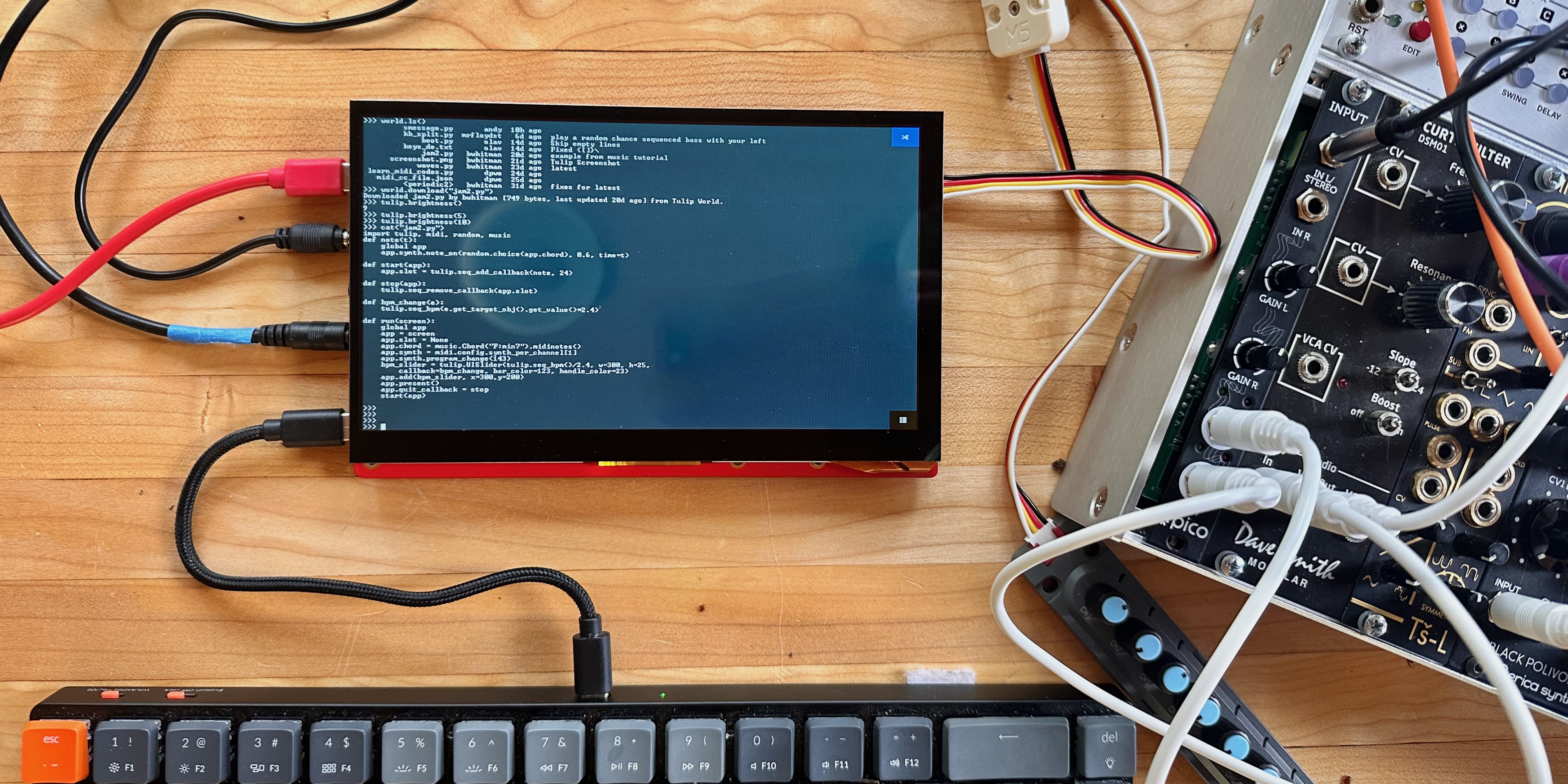The Tulip Creative Computer is now available
Tulip in action
Last year I told the world about Tulip, a portable low-power Python computer for making things.
I’m very happy to finally launch the general availability of Tulip, the portable creative computer I’ve been working on with friends for a couple of years. It’s a very cheap (US $59) and open portable device for making things, that boots right into a Python programming language prompt over a 7” touchscreen display. Now anyone can own one!
It’s got a very good analog (Juno-6, SH-101, etc) and FM-style (DX7) music synthesis engine built in, built from scratch by my dear friend Dan Ellis and myself, that you can control every oscillator and parameter of in code.
It also can be used to make games, animations, or just write. We ship it with a text editor, drum machine, Juno-6 patch editor, some example games, and a Tulip-only BBS where you can share messages and programs.
Get your Tulip today at tulip.computer!
Here’s a fun video of our friend Floyd showing off his Tulip:
Tulip has stereo audio output, 3.5mm MIDI in and out jacks, a battery jack, USB for power, and another USB for any bring-your-own computer keyboard. You can also grab a I2C dongle for controlling modular synth CV jacks and some other fun accessories like external displays, knobs, and joysticks. Tulip can end up being a great non-laptop controller for your gear, or Tulip’s synth itself, all in Python code that you write.

Tulip revisions
I’ve been working on Tulip for a couple of years, over a few hardware iterations. This all-in-one launch version of Tulip was designed with the help of our friends Makerfabs, who also manufacture it. The low price of Tulip just covers parts and manufacturing, with a tiny amount added per board to support further Tulip design iterations. We’re definitely not doing this for money. It’s my hope that lots of people get a Tulip and join us to make Tulip even better, by contributing apps, or giving us feedback, or showing off cool stuff you’ve made. Everything in Tulip is open source, from the hardware design to the apps and firmware and DSP. We have a small but fun Discord and you can also file issues on Github for help.
Can you help? Even if Tulip isn’t for you, maybe forward tulip.computer on to a friend or social media place to get them excited.

Tulip running the Voices app
I’ve really enjoyed working on and using Tulip, in a way that I am sure many of you understand. It doesn’t phone home to some random website, or try to train a model of what you do on it. Tulip is self-contained – it’s something you can understand all of by just using it. You flip a switch and it’s ready immediately. It’s got no web browser or email, no notifications, and can last on battery for a very long time. I’ve made more music on Tulip (and of course, programs that make music for me) than I have in many years on any other synth or program. It’s quirky, sometimes confusing, needs some fixes here and there, but has been a fun and reliable tool for sitting down and making something cool without distractions.
Get your Tulip today at tulip.computer!
Join the shore pine sound systems' Discord, where you can chat about Tulip, Alles and AMY!

Using Tulip to write poetry
- Get a Tulip at tulip.computer
- Tulip GitHub repository
- Tulip Getting Started
- Tulip Music tutorial
- Tulip API
- shore pine sound systems’ Discord, where you can chat about Tulip, Alles and AMY!
– Quadra Island BC, July 2024
Tulip would not be possible without the constant help and support from the group chat / soldering tip line of Dan Ellis and Douglas Repetto, and tons of help and early PCB designs by Matt Mets and Nicolas Villar. Thanks especially to Charlin and Zeqing at Makerfabs for the design help. Thanks also to all my friends who have heard nothing but Tulip status updates from me over the years.
